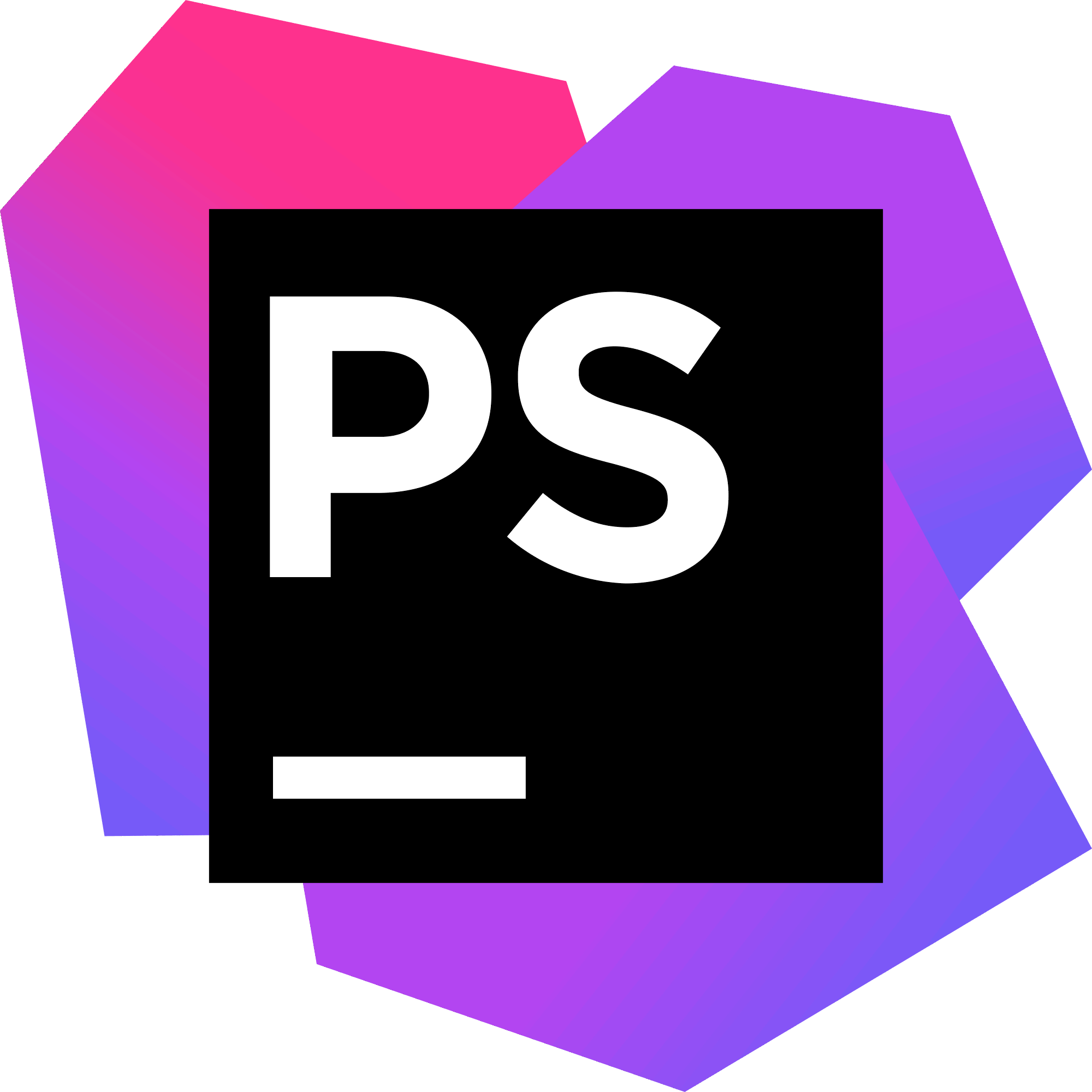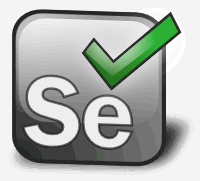Yes, IDE software can be accessed from various devices and platforms. Many recent IDEs provide cloud-based solutions, which allow users to access their projects from any device with an internet connection. IDEs are also designed to work with several operating systems, including Windows, Mac, and Linux. Because of its adaptability, integrated development environments (IDEs) are a popular choice among developers who work across numerous platforms.
List of 20 Best IDE Software
CLion is a IDE designed by JetBrains for C and C++ programming. This comprehensive tool offers advanced features tailored specifically for these languages, including code analysis, debugging tools, and refactoring options. With effortless integration...Read More CLion
AWS Cloud9 is an advanced IDE (Integrated Development Environment) that facilitates real-time code collaboration. It comes equipped with a variety of tools such as a code editor, terminal, and debugger, and supports multiple programming languages lik...Read More AWS Cloud9
the Atom Editor - an exceptional IDE tool designed for developers and programmers. This dynamic software provides a comprehensive toolkit to enhance your coding experience, with features like seamless cross-platform editing, intuitive auto-completion...Read More Atom Editor
Discover the power of phpDesigner 8 is a PHP software with a sleek and user-friendly interface. Create stunning websites effortlessly with its CSS3, HTML5, and JavaScript editors. Try it for free and see why phpDesigner 8 is a choice for web develope...Read More phpDesigner
Sublime Text is a IDE tool designed for programmers and developers. This robust software offers a customizable cross-platform interface, perfect for streamlining your workflow. It works flawlessly on Linux, Windows, and Mac, providing a seamless expe...Read More Sublime Text
Apache NetBeans is a and robust software that empowers developers to craft desktop, web, and mobile applications with PHP. Its user-friendly design and seamless integration with third-party tools and services streamline the development journey, enabl...Read More Apache NetBeans
CleanGuru is a streamlined platform specifically designed for cleaning businesses. Our software simplifies tasks such as bidding, invoicing, scheduling, and timekeeping, allowing you to focus on delivering top-quality services. With CleanGuru, you ca...Read More CleanGuru
PhpStorm is a leading PHP Integrated Development Environment (IDE) designed to enhance your productivity. Its advanced features allow for a better understanding of your code, making development more efficient. With built-in tools, it streamlines ever...Read More PhpStorm
DataGrip is an advanced SQL database management tool built by JetBrains. It boasts a user-friendly interface and powerful features for database developers and administrators. With seamless compatibility for popular databases such as MySQL, PostgreSQL...Read More DataGrip
Visual Studio Code, a lightweight and open-source code editor brought to you by Microsoft. With its support for multiple programming languages and essential features such as editing, debugging, and version control, this highly customizable tool offer...Read More Visual Studio Code
CodeLite is a highly efficient PHP development platform designed for easy use. It supports all major compilers and can be used on OSX, Windows, and Linux, making it a versatile choice for developers. With its lightweight design and trusted reliabilit...Read More CodeLite
Eclipse PHP is a highly capable and feature-rich development platform designed specifically for PHP programmers. Its advanced tools, such as code navigation, syntax highlighting, and debugging capabilities, help streamline coding processes and ensure...Read More Eclipse PHP
Geany is an exceptional IDE with a broad range of functionalities that make it a top choice for developers. Its compatibility with Windows, Linux, and macOS allows for seamless integration into any workflow. With support for over 50 programming langu...Read More Geany
Visual Studio is a integrated development environment (IDE) designed for .NET and C++ developers. It offers a wide range of tools for coding, debugging, and deploying applications. The recent integration of GitHub Copilot adds cutting-edge AI-assiste...Read More Visual Studio
Promyze is an innovative software solution designed to support developers in producing stable and maintainable source code. Through its seamless integration of best practices and collaborative features, Promyze prevents the insertion of flawed code a...Read More Promyze
CodeLobster IDE is a versatile and free tool for editing PHP, HTML, CSS, and JavaScript files. It offers a range of plugins tailored for popular frameworks and CMS platforms like Drupal, Joomla, JQuery, AngularJS, and WordPress. It supports various f...Read More CodeLobster IDE
Omnis Studio is a development platform for creating dynamic web, mobile, and desktop applications effortlessly. Featuring a unified codebase and cross-platform capabilities, Omnis Studio streamlines the development process, saving you time and enhanc...Read More Omnis Studio
A very own Collaborative Cloud IDE! Streamline yA development processes with features like live collaboration, advanced analytics, and seamless integration with popular tools and cloud services. A intuitive IDE allows teams to effortlessly share and...Read More Collaborative Cloud IDE
Selenium Automation is a testing tool designed to cater to businesses of all sizes. With its high-performing components, it enables fast and reliable web automation testing. This software works seamlessly on Windows, Linux, and macOS, making it compa...Read More Selenium Automation
dbForge Studio for MySQL is a graphical user interface designed to streamline MySQL and MariaDB database management, development, and administration. With its advanced features such as query execution, routine debugging, and automated object manageme...Read More dbForge Studio for MySQL
Learn More About IDE Software
- What Is IDE Software?
- What Are The Recent Trends In IDE Software?
- Benefits Of Using IDE Software
- Important Factors To Consider While Purchasing IDE Software?
- What Are The Key Features To Look For In IDE Software?
- Why Do Businesses Need IDE Software?
- How Much Time Is Required To Implement IDE Software?
- What Is The Level Of Customization Available In IDE Software?
- Which Industries Can Benefit The Most From IDE Software?
- Conclusion
What Is IDE Software?
An Integrated Development Environment (IDE) is a comprehensive tool that enables software engineers to write, test, and debug code rapidly. It combines several programming tools, including a code editor, debugger, and compiler, into a single, user-friendly interface. This enables developers to work on their projects without switching between applications.
IDE software is a must-have tool for developers of all skill levels, from beginners to experienced experts. The fundamental goal of IDE software is to simplify the software development process and boost productivity. It includes capabilities such as code completion, syntax highlighting, and automatic error checking to help developers write code more quickly and correctly.
The built-in debugger enables them to detect and resolve code errors more rapidly, saving important time and effort. One of the most significant benefits of using IDE software is the ability to handle multiple programming languages. Whether you're working on web development, mobile app development, or game development, IDE software offers a one-stop shop for all of your programming requirements.
It eliminates the need for separate tools for each language, making the development process more streamlined and organized. In addition to developing and testing code, IDE software includes facilities for project management and collaboration. It enables developers to manage several versions of their code, track changes made by team members, and work on projects in real time.
This is especially handy for teams operating remotely or across time zones. When looking for an IDE software, you should examine its compatibility with your unique project and programming language. Some IDEs are better suited to specific languages, whereas others handle a variety of languages. You should also search for features like customization choices, third-party plugin support, and customer support to ensure a fast and quick development process.
What Are The Recent Trends In IDE Software?
In recent years, IDE (Integrated Development Environment) software has changed dramatically to meet the growing needs of the software development industry. IDEs are crucial tools for developers, as they provide a full platform for efficiently creating, debugging, and testing applications. With technical breakthroughs and shifting market demands, the world of IDE software is constantly evolving and adapting.
Here are the most recent trends in IDE software to help you make an informed decision on which IDE is ideal for your development needs.
1. Cloud-Based IDEs: One of the most notable changes in recent years has been the rise of cloud-based integrated development environments (IDEs). These IDEs enable developers to access their coding environment from any device that has an internet connection, removing the requirement for local installations. This trend benefits remote teams since it encourages cooperation and provides a consistent development experience across all devices.
2. Artificial Intelligence (AI) Integration: Modern IDEs incorporate AI and machine learning features to boost coding efficiency and speed. These capabilities help developers identify and solve issues, recommend code optimizations, and predict potential coding errors. AI integration in IDEs transforms developers' coding experiences, increasing productivity and accuracy.
3. Support For Low Or No Code: With the rise of low-code and no-code programming, IDEs are beginning to add features that support this trend. These capabilities enable users with little to no coding skills to easily create applications. IDEs with low-code or no-code support are gaining popularity, particularly among non-technical workers.
4. Containerization Support: As more apps adopt a microservices design, IDEs are adding containerization capabilities. This functionality enables developers to work with containers and manage container clusters directly from the IDE, simplifying the development and deployment process.
5. Mobile Development Support: With the increased need for mobile applications, IDEs now support mobile development, allowing developers to build, test, and debug mobile apps all in the same environment. This trend is important for mobile developers because it simplifies the development process and decreases the amount of tools required.
6. Git Integration: Git has become the most popular version control system among developers, and many IDEs now include built-in Git integration. This tool enables developers to do standard Git operations like committing, branching, and merging without leaving the IDE.
7. Configurable User Interfaces: IDEs are becoming more configurable, enabling developers to tailor their coding environment to their specific needs. This trend benefits developers who require a certain setup to be more productive.
Benefits Of Using IDE Software
IDE software, or Integrated Development Environment, is a sophisticated tool used by software engineers to simplify the coding process. It combines various tools and functions into a simple interface, making it an essential tool for any developer.
These are the top advantages of using IDE software and why it's a vital investment for any development team.
1. Improved Code Editing: One of the most significant advantages of IDE software is its powerful code editing features. These capabilities include syntax highlighting, auto-completion, and code refactoring, which make coding more efficient and error-free. Developers may personalize their coding experience while increasing efficiency thanks to customisable features.
2. Integrated Debugging: Debugging is an important part of software development, and IDE software makes this process easier by including an integrated debugger. This functionality enables developers to easily discover and resolve issues in their code. It also gives real-time feedback, enabling developers to create high-quality, bug-free applications.
3. Variety Of Programming Languages: Another key advantage of IDE software is its ability to support numerous programming languages. Whether you're coding in Java, C++, Python, or another language, IDE software provides a set of tools and capabilities tailored to that language. This adaptability makes it an invaluable resource for developers working on a variety of projects.
4. Version Control: Working on a large project with multiple team members can lead to disagreements and confusion. IDE software provides version control capabilities to help you manage these scenarios effectively. It enables developers to monitor changes, compare versions, and work together smoothly on a single project.
5. Efficient Project Management: Managing a project from start to end entails a variety of duties, including coding, debugging, testing, and deployment. IDE software makes this process easier by offering a single platform for all of these operations. It also provides project templates, allowing developers to begin a project fast and efficiently.
6. Third-Party Integration: IDE software allows for the integration of external tools and frameworks, giving developers with a complete solution. Whether for project management, database administration, or testing, IDE software includes plugins and extensions to help make the development process more efficient and fluid.
Important Factors To Consider While Purchasing IDE Software?
When it comes to choosing IDE software, there are several important elements to consider in order to make an informed purchase. After all, investing in the appropriate IDE software is critical to the success of any software development project.
To help you out, we've compiled a thorough list of crucial aspects to consider when selecting IDE software.
1. Compatibility: The first and most important element to examine is compatibility with your operating system and programming languages. Make sure the IDE software you chose supports the languages and platforms you need to enable smooth development and debugging operations.
2. User Interface: The IDE software's user interface is also an important consideration. An intuitive, user-friendly interface can boost your total productivity, but a cluttered or convoluted interface might slow you down and impede your work. So, before purchasing IDE software, consider its layout, navigation, and customization choices.
3. capabilities And Tools: Different IDE software provide distinct sets of capabilities and tools. It is critical to examine your individual requirements and select an IDE software that has the capabilities and tools you require for software development. Look for features like code completion, debuggers, and version control integrations, among others.
4. Customization Options: Each software development project is unique, and off-the-shelf IDE software may not meet your individual requirements. In such instances, it is critical to select an IDE program that includes customization options, allowing you to adjust the software to your exact requirements.
5. Costs: IDE software can range from free open-source alternatives to high-end enterprise packages. Determine your budget and compare the costs of the IDE software you're considering. Remember to include any additional fees, such as licenses, subscriptions, and upgrades.
6. Support And Documentation: If you encounter any problems or require assistance, dependable customer service and detailed documentation might be lifesavers. Look for IDE software that provides dependable support and detailed documentation to guarantee that you get the assistance you require when you need it.
7. Reviews And Recommendations: Before purchasing IDE software, read user reviews and recommendations. This can provide significant insights on the software's benefits and cons, allowing you to make an informed decision. By taking these important variables into account, you can limit down your selections and select the finest IDE software for your unique demands and budget. Keep in mind that the correct IDE software can significantly improve your software development process and help to the success of your projects, making it an excellent investment.
What Are The Key Features To Look For In IDE Software?
When selecting the best IDE software, there are a few crucial characteristics to consider to guarantee that you receive the best value for your money. An IDE (Integrated Development Environment) software is an essential tool for developers since it provides a comprehensive collection of tools and functionalities for creating, editing, and debugging code rapidly.
Here are the main features to look for when comparing different IDE software solutions.
1. Multi-Language Support: One of the most important factors to consider when selecting an IDE software is its support for several programming languages. This is especially significant if you work in multiple languages or plan on doing so in the future. A decent IDE should support a wide variety of languages, including popular ones such as Java, C++, Python, and HTML.
2. Code Completion: This feature expedites the coding process by proposing suitable code completions as you type. A good IDE software should feature dependable and accurate code completion capabilities to save you time and effort.
3. Debugging Tools: A powerful debugger is a must-have tool in any IDE. It enables you to find and rectify mistakes in your code, resulting in more efficient and error-free programming. Look for an IDE with a simple debugging interface and a variety of debugging tools, including as breakpoints, step-by-step code execution, and real-time monitoring.
4. Customization Options: Each developer has unique preferences and coding styles. A decent IDE should include customization tools that allow you to tailor the UI, keyboard shortcuts, and color schemes to your specific needs and optimize your workflow.
5. Integrated Version Control: An IDE with integrated version control enables you to manage and trace changes to your code. This is especially handy if you operate in a team, allowing for more seamless cooperation and simpler identification of code modifications.
6. Third-Party Plugin Enable: A versatile IDE should also enable third-party plugins to expand its capabilities. Look for IDE software that includes a variety of plugins for code completion, debugging, and other functions to customize the IDE to your exact requirements. By taking into account these critical aspects, you may select an IDE software that will increase your productivity, streamline your coding process, and assist you in producing high-quality code effectively. Compare numerous options and read reviews to determine the best IDE software for your individual programming requirements.
Why Do Businesses Need IDE Software?
Today's businesses rely heavily on technology to run and succeed. To remain competitive and efficient, businesses must have the necessary tools and technologies in place. This is where the Integrated Development Environment (IDE) software comes in handy. IDE software is a comprehensive, all-in-one solution that allows businesses to build, test, and debug software applications more efficiently and effectively.
One of the key reasons why businesses seek IDE software is its productivity and efficiency benefits. IDE software offers a centralized platform for developers to write, modify, and manage code for several programming languages in one location. This lowers the need to switch between many tools, saving time and increasing productivity. Furthermore, many IDEs provide built-in debugging and testing features, which serve to streamline the development process.
Furthermore, IDE software allows businesses to assess the quality and stability of their software applications. Using tools such as code completion, syntax checking, and error highlighting, developers can identify and resolve issues early in the development process. This not only saves time and resources, but also ensures that the final product is of high quality and meets all applicable criteria. In today's fast-paced and competitive business world, time to market is important.
Templates, code development, and project management tools are among the features of IDE software that assist businesses in getting their goods to market more quickly. This can help businesses get a competitive advantage and stay ahead of the competition. Another key benefit of IDE software for businesses is its collaborative capabilities. IDEs enable multiple developers to work on the same project at the same time, making it easier for businesses to manage larger and more complex projects.
Furthermore, many IDEs provide version control and team communication features, which make collaboration and coordination easier among teammates. Finally, IDE software offers long-term advantages to businesses.As technology advances and new programming languages and tools emerge, IDEs evolve and adapt, making it easier for organizations to stay current and relevant in an ever-changing digital landscape. Furthermore, the skills and competence gained from using IDE software are quite beneficial and can benefit businesses in the long run.
How Much Time Is Required To Implement IDE Software?
The time required to develop IDE software varies according to a number of factors. These may include the complexity of the software, the size of your team, and the level of customisation required for your particular project. In general, implementing IDE software can take a few days to many weeks. This involves the initial setup, installation, and configuration of the software.
However, keep in mind that the time required for implementation may also be determined by your team's learning curve and familiarity with similar products. The first step in installing IDE software is to assess your needs and select the appropriate tools for your team and project. This may include completing research, reading reviews, and taking advantage of any free trials or demos provided by software vendors.
Once you've chosen your IDE software, you'll need to plan some time for installation and configuration. This can include downloading and installing the software, configuring it to operate with your development environment and projects, and implementing any required integrations. Next, your team will need to familiarize themselves with the software and its features. This may include training sessions, lectures, and hands-on practice to ensure that everyone is comfortable using the IDE.
This can take anywhere from a few days to a week, depending on the complexity of the software and the availability of training resources. Finally, the length of time necessary for implementation will be determined by any extra customization or integration needed to meet your team's specific requirements. Integrating the IDE with your version control system, setting up build tools, and configuring code completion and debugging tools are all possible options. The time required for these tasks will vary, but they are critical for improving the IDE's effectiveness and efficiency for your team.
What Is The Level Of Customization Available In IDE Software?
Integrated Development Environment (IDE) software is a valuable tool for developers because it provides a convenient platform for writing, testing, and debugging code. With the growing need for software development, the market is saturated with IDE options, making it difficult for consumers to choose the best one. One important element to consider when selecting IDE software is the extent of customization. Customization is the ability to modify the IDE to the user's preferences and individual project requirements. It enables developers to customize their workspace, tools, and features, resulting in increased productivity and workflow. IDE software with a high level of customisation provides greater flexibility and convenience, making it an excellent choice for developers from many industries. So, what level of customisation is available in IDE software?
Let's delve deeper into this topic so you can make an informed conclusion.
1. User Interface Customization: IDE software with a high level of customization enables users to tailor the interface by changing themes, backgrounds, text size, colors, and other settings. Developers can select a UI that best meets their needs, making the coding process more pleasurable and comfortable.
2. Feature Customization: Each IDE software includes a set of features and tools to help with code development. However, these functionalities may not be applicable to every project, and having them clutter up the UI can be distracting and overwhelming. IDE software with a high level of customisation allows users to remove or rearrange elements and tools, making the interface more efficient and precise.
3. Plugin And Extension Support: IDE software with a high level of flexibility frequently supports third-party plugins and extensions. These add-ons can increase the IDE's capabilities by allowing users to include their preferred tools, languages, and features. This allows developers to tailor the IDE to their individual project requirements.
4. Customizing Keyboard Shortcuts: Developers rely heavily on productivity, and keyboard shortcuts can considerably speed up the coding process. IDE software with a high level of customisation allows users to create or add their own keyboard shortcuts for various functions, allowing them to work more efficiently.
5. Code Snippet Customization: Ideally, IDE software should have a library of pre-written code snippets that may be quickly placed into user code. However, developers may have their own collection of frequently used snippets. IDE software with a high level of customization enables users to build and manage bespoke code snippets, saving time and effort.
Which Industries Can Benefit The Most From IDE Software?
When it comes to optimizing the software development process and increasing overall productivity, Integrated Development Environment (IDE) software is an invaluable resource for all sectors. However, other sectors benefit more from adopting IDE software into their workflows.
In this buyer's guide, we'll look at which sectors can gain the most from utilizing IDE software.
1. Software Development: It is unsurprising that the software development business benefits the most from integrated development environments. IDEs are specifically developed to improve the productivity of coding, testing, and debugging, making them indispensable tools for software engineers and developers. IDE software, which includes capabilities such as code completion, automatic error checking, and easy interface with version control systems, significantly accelerates the development process while lowering the likelihood of errors.
2. Web Development: As new technologies and frameworks have emerged, web development has become more sophisticated. IDE software is an essential tool for web developers since it has a variety of tools to help them deal with these difficulties, such as HTML and CSS editing, JavaScript debugging, and web development-specific frameworks. IDEs also include plugins and extensions to help developers build responsive, cross-platform websites.
3. Data Science: Data scientists use IDE software to analyze and modify massive volumes of data. IDEs provide capabilities such as data visualization, interactive coding, and debugging tools, which make it easier to code and test complex algorithms. Furthermore, many IDEs provide data science libraries and packages, which help to ease the complicated nature of data analysis.
4. Mobile App Development: IDE software is an essential tool for mobile app developers since it enables the building and testing of mobile applications across many platforms. IDEs, which include capabilities like app deployment, code templates, and debugging tools, serve to reduce the time and effort required to develop mobile apps for various operating systems.
5. Game Development: The game development business relies heavily on IDE software to produce high-quality, interesting games. IDEs include capabilities like as code completion, 3D graphics development, and debugging tools, making it easier for developers to produce games for several platforms. Some IDEs also include built-in game engines, which streamlines the game production process.
6. Education: IDE software is increasingly popular in the education industry, notably for computer science and programming courses. With its user-friendly interfaces, code completion, and debugging capabilities, IDEs make it easier for students to learn and practice coding, making them an indispensable tool for instructors.
Conclusion
Finally, selecting the appropriate IDE software can significantly improve the productivity and efficacy of your development process. To make an informed decision, you must thoroughly analyze your individual requirements as well as the functionality provided by other IDEs. First and foremost, evaluate the programming languages and platforms supported by the IDE.
To avoid compatibility concerns, make sure the IDE you chose supports the languages and systems you'll be working with. Consider the user interface and its intuitiveness. A user-friendly interface may boost productivity and make the entire development process more fun. Look for code completion, debugging, and project management tools to assist streamline your process.
Integration with other tools and frameworks is a key consideration. Check if the IDE supports easy integration with your preferred version control system, database management tools, and testing frameworks. Furthermore, consider the level of customization and flexibility provided by the IDE. Can you add new plugins or alter the layout to meet your specific requirements?
This can dramatically improve your development experience and overall productivity. Finally, don't forget about the cost and licensing alternatives. While many free IDEs exist, some may require a premium license for additional capabilities. To establish the IDE's value for your unique needs, consider the pricing in relation to the capabilities and benefits it provides.
By carefully evaluating these variables and extensively investigating your options, you may choose the ideal IDE software to match your needs and help you reach your development objectives. With the correct IDE, you can streamline your workflow and improve your coding experience, resulting in higher quality code and faster project delivery.
IDE Software FAQ's
Can IDE Software Be Accessed Across Multiple Devices And Platforms?
Is IDE Software Future-Proof And Adaptable To Emerging Technologies Like AI, Blockchain Or IoT?
Yes, IDE software is future-proof and adaptable to upcoming technologies such as artificial intelligence, blockchain, and the Internet of Things. These software systems are always changing and updating their functionality to stay current with the latest advancements.
Most IDEs also accept plug-ins for certain technologies, which makes it easier for developers to include them into their workflows. With continual technological breakthroughs, IDEs are meant to be versatile and adaptive to satisfy the industry's ever-changing expectations.
Is There A Free Trial Offered To Assess IDE Software Before Committing?
Yes, many IDE software suppliers provide a free trial period for consumers to evaluate the product before making a purchase. This allows customers to evaluate the software's features, interface, and overall functionality to determine whether it satisfies their requirements.
Some free trials may be limited in duration or capabilities, but they nevertheless give useful information to help users make an informed decision. It is usually advisable to take advantage of free samples before purchasing any IDE software.
Does IDE Software Offer Data Security Features And Meet Regulatory Compliance Standards?
Yes, most IDE software includes data security safeguards and meets regulatory compliance standards to secure sensitive information. This includes secure login methods, encrypted stored data, and regular upgrades to resolve any security flaws.
Furthermore, many IDE software includes capabilities expressly designed to assist firms comply with various standards, such as GDPR or HIPAA. It is critical to conduct extensive study before selecting an IDE program that fits your organization's specific data security and compliance requirements.
Can IDE Software Integrate Seamlessly With Existing Tools And Platforms?
Yes, IDE software is intended to interface smoothly with existing tools and platforms, allowing developers to work in their preferred environment while still accessing all necessary capabilities and resources. Most IDEs integrate with major tools and platforms, including Git for version control, debugging tools, and third-party libraries. This enables a more efficient and streamlined development approach.






















